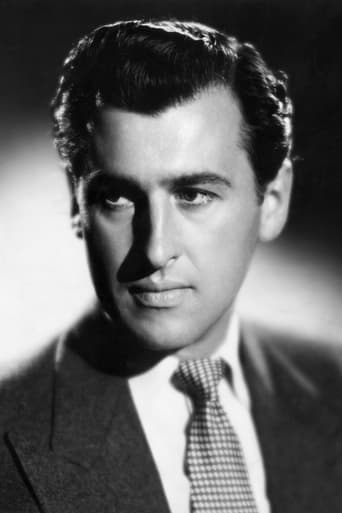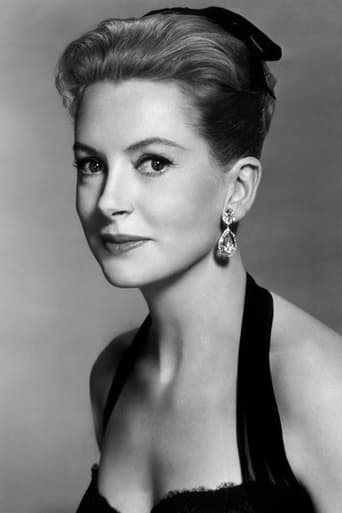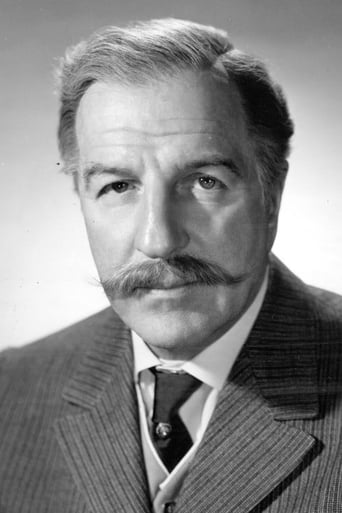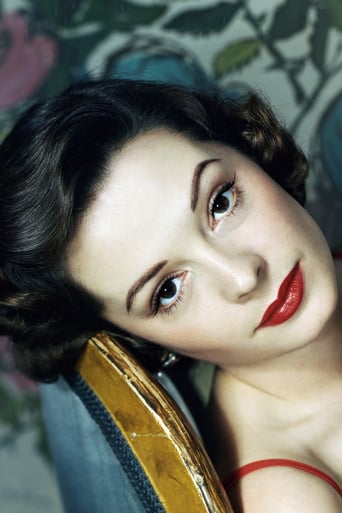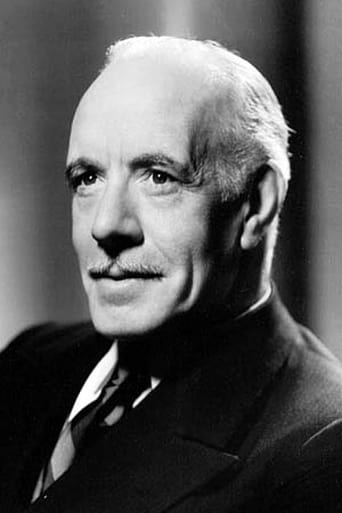Solemplex
To me, this movie is perfection.
Tymon Sutton
The acting is good, and the firecracker script has some excellent ideas.
Dana
An old-fashioned movie made with new-fashioned finesse.
sandra small
This adaptation of The Prisoner Of Zender has Stewart Grainger playing European King Rudolf V at Strelsau who is the constitutional head of a version of a feudalistic system. In order to retain this version of a European feudal system, then it is crucial for King Rudolfe to be crowned. But like some kings (for example Great Britain's Edward VII, -9 November 1841 – 6 May 1910)he leads a merry and decadent life of irresponsibility. This makes him vulnerable and as such rife for usurping by his half brother Michael, Duke of Strelsau (Robert Douglass). But Michael's threat to the the crown lays in his courtier, the villain Rupert of Hentzau (James Mason)who seeks glory and power for himself via Michael as opposed for the latter.Therefore the threat to the crown and the feudalistic system in this film is that of a republican nature in that Rupert of Hentzau has desires of power. In this respect the fairytale-like plot is not too far from what is interpreted as reality by the British press. To further explain, some sectors of the British press would have former British Prime Minister Tony Blair as a one time pretender to the crown. This ambition is interpreted as being dangerous for the people in the form of Rupert of Hentzau in The Prisoner Of Zender.Elements of William Shakespeare's ( some say, propaganda) play, Richard III are found in The Prisoner of Zender. Like Richard III, the Prisoner Of Zender illustrates a fragile monarchy, and the feudal system which buttresses it destabilised by a treacherous half brother. As the film illustrates, the feudal system is bound by the loyalty of an aristocracy which in turn is furnished with a privileged lifestyle. This is illustrated by Princess Favia (Deborah Kerr) who isn't willing to give such a privileged lifestyle up. Such a privileged lifestyle comes to define the meaning of national patriotism that binds its subjects (the people) to. With the nobility defining patriotism then all who disagree with them are disloyal, traitors and usurpers as seen in Rupert of Hentzau.Indeed, Rupert of Hentzau is keen to break the feudalistic system as witnessed in the swashbuckling sword-fencing scene where he defies the rules of play. This prominent scene is one of the best in the film. Where Grainger is urbane, and charming in his style of acting his duel role, Mason is the scene stealer. The latter's acting is first rate, and it never lets up. Another prominent actor in The Prisoner Of Zender is Jane Greer who plays Antoinette de Mauban with conviction.The Technicolour of the film reflects and captures the ostentatiousness of a regal lifestyle, here directed by alleged budget conscious Richard Thorpe. Moreover, the Technicolour brings the film to life and adds to its fairytale-like appeal. This makes the film a feast for the eyes.In sum this film is on the surface superficial, but beneath its Technicolour, movie star glamour it is a Shakespereanesque tale of political intrigue!
jc-osms
Rollicking Technicolor swashbuckler like they just don't, can't or probably just won't make anymore. You just know that today the story here would be swallowed up in miles of SFX ("National Treasure" anyone?). Virtually the only noticeable effect here is the cleverly wrought double-play scenes of Grainger as the facile sot of a king and his dashing True-Brit doppel-ganger who is pressed into his impersonation (you really can't see the join). Grainger of course eventually saves the kingdom against the dastardly machinations of the King's designing brother, Prince Michael and the even more dangerous James Mason, (a picture in lilac jodhpurs!) as the real brains and cold-steel of the whole operation, Rupert of Hentzau. Here we get a narrative true to its "Boy's Own Story" novel source which plays it straight from start to finish. The story engages and involves the viewer straightaway and takes you out of the everyday into a magical make-believe world of derring-do (and derring don'ts!). The three English leads (Grainger, Mason and Kerr) are all absolutely delightful, immersed as far as they need to be in their characters with nary a trace of knowing cynicism at the unreality of it all. The climax of the film of course is the terrific sword-fight between Grainger and Mason (more correctly the two gifted stunt-players), a trick repeated in Grainger's next feature "Scaramouche" to even better effect. All in all a matinée treat of the highest order.
theowinthrop
The Stewart Granger - Deborah Kerr movie version of Anthony Hope's THE PRISONER OF ZENDA is an entertaining film, but it comes off second best to it's 1937 predecessor with Ronald Colman and Madeleine Carroll. The fact that the film was in Technicolor (Colman's was in black and white) is odd but possibly part of the reason for the slightly lesser result. All of the performers in the 1952 version did very good work that was comparable to the work that the previous cast did. Yet the later film is not quite as good.According to the Turner Classic Movie's Stewart Granger was at a dinner at Ronald Colman's house where they ran the 1937 film as entertainment. Granger liked the film and convinced MGM to do a remake. The film was like a scene by scene remake - with a small screen set up showing the original film for the cast to review when they did their scenes. The only changes was the production crew, the cast and the color film stock.Granger comes off as good as Rudolf Rassendyl and King Rudolf V, but he is a trifle self conscious. When Colman played the part he had a great lightness of touch that helped color his performance (particularly when dealing with both Douglas Fairbanks Jr. as Rupert of Hentzau and Raymond Massey as Black Michael). Granger tries to copy this but it seems a little forced. It's odd because he had an advantage over Colman regarding the cast - Rupert in the 1952 film was played by James Mason, who had already appeared in two films (as deadly adversary) to Granger (THE MAN IN GRAY and FANNY BY GASLIGHT). Colman never appeared opposite Fairbanks in any previous movie to their version of THE PRISONER. As a result there is a screen chemistry between Granger and Mason, but it doesn't translate to a better pair of performances. Some critics point out that Mason seems to old for Rupert, but except for being called "Young Hentzau" by Colonel Sapt (Louis Calhern) there is nothing to suggest he is in his early 20s. However, Fairbanks was leaner in appearance than Mason, so that his youthful qualities did shine through while Mason's just did not do so.The part of Michael is handled by Robert Douglas as though he is just jealous of his half-brother's luck of birth. Yet he is shown with one thing that Raymond Massey's performance did not have - Massey was not crippled. Douglas constantly walks with a cane, which suggests a physical weakness that is a mirror to his emotional one. But it's too little, and it is never really developed.Deborah Kerr's Flavia is appealing (any performance of Kerr's is appealing) but Madeleine Carroll was able to get the jolt of that sense of duty that prevents Rassendyl and Flavia from leaving at the end - Kerr seems to be just repeating her lines by rote in their last scene. Mary Astor and Jane Greer both were equally affective as Michael's mistress, as were C. Aubrey Smith and Louis Calhern as Sapt (Calhern was able to give a devilish twist to the Colonel at one point when commenting on a hidden passage in the royal palace at Streslau which was useful for protecting royal reputations). David Niven and Robert Coote were Fritz von Tarkeheim in the two versions, and both played the role effectively but not remarkably.The color was useful in the 1952 film in making the sets more evocative of that period from 1890 to 1897 (Victoria's upcoming Jubilee is mentioned at one point). But it only goes so far - it just reminds us that the characters are in a realistic setting. But the story is such romantic fluff that the realism seems unimportant. In short the 1952 film is really good, but the earlier one is nearly perfect in comparison. I still would stick to Colman's version than Granger's. As for the 1979 Peter Seller's spoof, or the 1975 Malcolm MacDowell "George Macdonald Fraser's" ROYAL FLASH, or the 1965 partial spoof in the Blake Edwards' THE GREAT RACE, they are in a special class as they are not serious remakes but done for laughs mostly.
bob the moo
Englishman Rudolf Rassendyll travels to see his distant relative King Rudolf V. When he arrives in the country he gets some funny looks and, when he meets King Rudolf he understands why – they are the total spit of one another, apart from a moustache. The two men spend all night drinking, a habit King Rudolf is oft to entertain but Rassendyll is a light weight and has fallen asleep long before the final bottles are opened. The next morning he wakes up with a sore head but the King is out for the count for much longer due to a drugged bottle of wine – the work of his brother Michael, who seeks to claim the throne in the chaos that he hopes will follow the cancellation of the day's coronation. Rassendyll steps into the place of the King in a cunning ploy to keep the country steady; however he finds himself in the midst of a much more serious ploy than drugged wine.Despite the fact that it has been made many times, I must confess to this being the first time I've seen this story told. I must also confess that for the most part I found it quite dull. On paper I can see how fascinating it could have been because it has political intrigue, betrayals, sword fights and action. However the film opens with a sort of criss-cross humour that didn't really engage me at all. It wasn't funny and it seemed to undercut the serious business of telling a good yarn. Things get a bit better once the villains turn up but even then I was surprised by how plodding it was all delivered. The final scenes were pretty good and it was a welcome arrival for sword fighting in a very talky film but I did wish there had been a bit more swagger to the rest of the film, if not actually action.The cast are reasonably good. Granger does well but his sudden transformation from innocent abroad into action hero at the end was a gear change too much. Kerr is pretty but mostly pretty bland. Calhern is solid and Greer was a strange find. I liked Douglas but it was Mason who dominated the film. He seems a bit out of place but he has some great lines and generally he looks like he is having fun and not taking any of it too seriously. He is a breath of fresh air among the rest of the stiff material and he stole every scene he was in.A good story then but delivered in a rather flat and dull fashion that put me off early on and never really got me back. It all looks good in glorious Technicolor but other than that the only other thing that kept me with it was a delicious little turn from Mason, who at least has the good taste to have a bit of fun – something that I had hoped to do myself but sadly did not.

